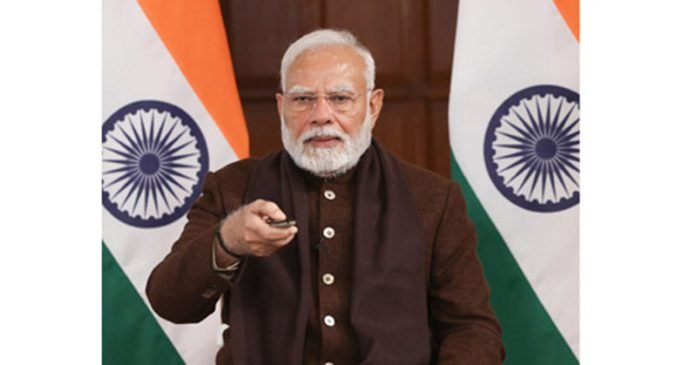In a landmark event ahead of the launch of train services to Kashmir, Prime Minister Narendra Modi virtually inaugurated the Jammu Railway Division from New Delhi. Calling it a historic milestone, the Prime Minister highlighted the transformative potential of the Udhampur-Srinagar-Baramulla (USBRL) rail line, which will significantly enhance connectivity in Jammu and Kashmir and link the region seamlessly with the rest of India.
“Integration and Progress”
Speaking via video conferencing, Modi lauded the inauguration of the Jammu Railway Division as a monumental step towards integrating Jammu and Kashmir into the national railway network. “Completion of the Chenab Bridge—the world’s highest railway arch bridge—and the Anji Khad Bridge, India’s first cable-stayed bridge, marks an unparalleled feat of engineering. These structures will be pivotal in fostering economic growth and regional prosperity,” he said.
The Chenab and Anji Khad bridges, located in Reasi district, are critical components of the Katra-Baramulla railway track. Modi noted that these projects epitomize India’s commitment to “Sabka Saath, Sabka Vikas,” underscoring the Government’s dedication to holistic development.
Event Highlights
The virtual inauguration was attended by prominent figures, including:
- Railway Minister Ashwini Vaishnaw (virtually present)
- Union Minister Dr. Jitendra Singh
- Lieutenant Governor Manoj Sinha
- Chief Minister Omar Abdullah
- Lok Sabha MP Jugal Kishore Sharma
- Leader of Opposition Sunil Sharma
- MLA Vikram Randhawa
- Chief Secretary Atal Dulloo
Senior officials from the Railway, civil, and police administration also graced the occasion.
Enhanced Connectivity
The newly inaugurated Jammu Railway Division covers 742.1 km of tracks, including the Pathankot-Jammu-Udhampur-Srinagar-Baramulla section, Bhogpur Sirwal-Pathankot, Batala-Pathankot, and Pathankot-Joginder Nagar sections. This development is set to:
- Improve connectivity between Jammu and Kashmir and the rest of India
- Boost employment opportunities
- Drive tourism and socio-economic growth
An official statement remarked that the division fulfills long-pending aspirations and marks a major leap forward for regional infrastructure.
Transformative Railway Milestones
Modi reflected on the historic transformation of Indian Railways over the last decade:
- Electrification Milestone: Nearly 100% electrification achieved, compared to 35% in 2014
- Railway Tracks Added: 30,000 km of new tracks laid
- Employment Boost: Lakhs of jobs created within the railway sector
- Vande Bharat Trains: Over 50 operational trains reducing travel time across major routes
- Metro Expansion: Metro services now operational in 21 cities, with further plans underway
“The Railways are no longer just a means of transport but a catalyst for growth,” Modi asserted, emphasizing its role in driving trade, industry, and employment opportunities.
Looking Ahead: High-Speed Rail and Beyond
Modi promised that bullet trains are not a distant dream for India, as the country accelerates its pace in “new-age connectivity.” The modernisation of the railways aligns with India’s aspirations of becoming a global leader in infrastructure and mobility.
The Prime Minister’s vision emphasizes not just connectivity but also the socio-economic development of every region. “From the Chenab bridge to the Vande Bharat trains, we are laying the foundation for a truly developed Bharat,” he said.
Key Facts: USBRL Project
- Chenab Bridge: World’s highest railway arch bridge
- Anji Khad Bridge: India’s first cable-stayed bridge
- Region Covered: Udhampur-Srinagar-Baramulla rail line
- Key Benefits: Improved connectivity, economic progress, employment opportunities, and enhanced tourism potential
What Lies Ahead
The newly inaugurated Jammu Railway Division and the USBRL project will undoubtedly serve as a cornerstone for progress in Jammu and Kashmir. The region, often referred to as “Paradise on Earth,” is poised to experience unprecedented growth in tourism, trade, and infrastructure, bringing it closer to the heart of India.




